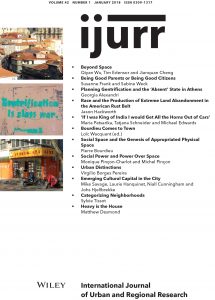Extreme land abandonment is one of the most visible expressions of urban decline. Conventional theory emphasizes housing lifecycle processes, municipal fiscal challenges and deindustrialization to explain its prevalence. Empirically however, these factors are not strongly associated with the most extreme instances of land abandonment in the American Rust Belt. Race, by contrast, is strongly associated with these patterns, yet there is little mention of it in conventional theory. This article draws on group threat theory to explain how the construction of Blackness as a threat to white property, power and political influence, has propelled the production of extreme land abandonment. The constructed threat has translated into a sustained suppression of demand and capital for overwhelmingly black neighborhoods. These forces operate both independently and as an accelerant for other abandonment drivers.

